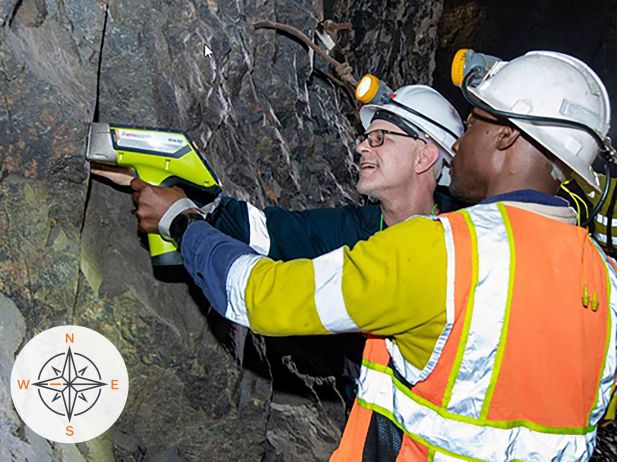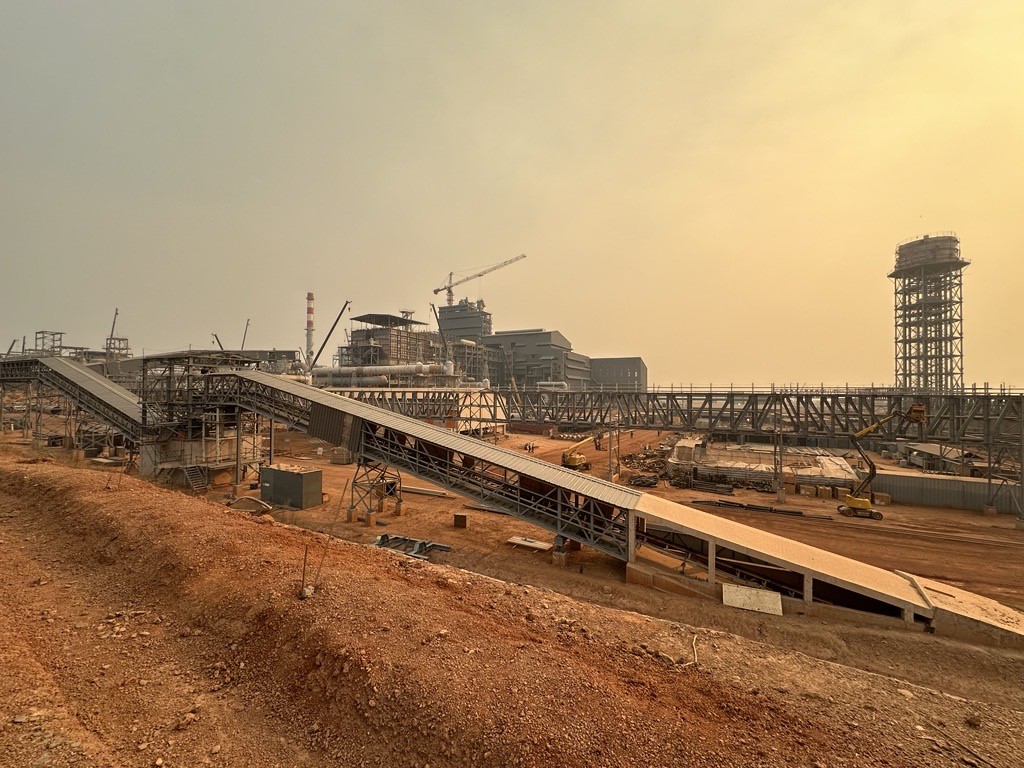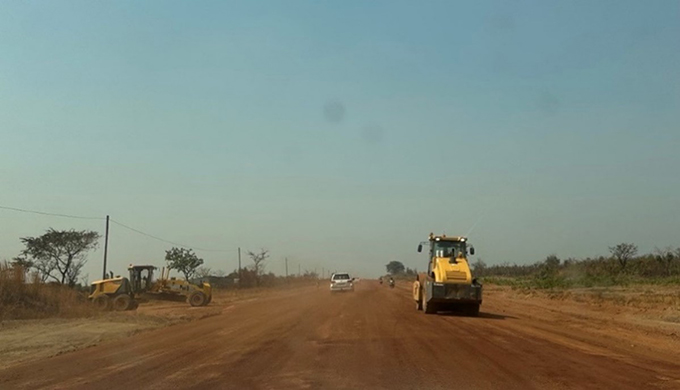Subscribe
Sign up for timely perspectives delivered to your inbox.
During a research trip to the Democratic Republic of the Congo, Portfolio Manager Tal Lomnitzer unearths a producer of green metals with a commitment to regenerating mining’s reputation.

| The JH Explorer series follows our investment teams across the globe, sharing their on-the-ground research at a country and company level. |
The Energy Transitions Commission has calculated that the clean energy transition will necessitate the production of 6.5 billion tonnes of end-use materials by 2050, with steel, copper, and aluminium making up 95% of this demand.1 The remainder consists of other critical minerals like lithium, cobalt, graphite, zinc, nickel and rare earths. Often overlooked, however, is the role and responsibility of mining companies tasked with meeting this mammoth requirement for materials to will enable the achievement of net zero emissions targets.
To better understand how the industry is facilitating this transition, I recently visited zinc and copper operations owned by Canadian company Ivanhoe Mines, located in the Democratic Republic of the Congo (DRC), the second largest country in Africa, boasting enormous wealth in green metals and minerals.

High grade copper and zinc ore from the Kamoa-Kakula and Kipushi mines (X-Ray sampling shows an impressive 20% copper grade rock face).
The phrase “Dr Livingstone I presume” uttered on the shores of Lake Tanganyika in 1871 by explorer Henry Morton Stanley when he found the Scottish physician were spoken before the area came under the control of Belgium. Anyone who has read (or watched) King Leopold’s Ghost will be familiar with the sorry history of the Congo under his rule. Under the guise of supposedly liberating the people from the tyranny of slavery, Leopold did quite the opposite, pillaging the country for its vast resources and oppressing its people. The only thing ‘liberated’ during that period were vast quantities of ivory and metals.
Whilst the prolific mineral endowment has not changed, what has changed enormously is the country’s recovery of self-determination and how it benefits from the wealth that lies beneath its soil. Precisely because of this history it is important for us to be mindful of the impacts that the companies we invest in have at the local and national level. Gaining a better understanding of the social and political context as well as the geological endowment and logistical challenges were key motivations for my visit.
Ivanhoe became active in the DRC in 1998, discovering the Kamoa deposit near Kolwezi in 2008. The Kakula deposit was discovered in 2016 and copper production commenced in 2021. A reminder of just how lengthy the process of developing a mine from early exploration through discovery, permitting and construction can be. When Phase 4 of this project is completed in 2030, a mere 32 years from when Ivanhoe started exploring, the Kamoa-Kakula operation will be the world’s third largest copper mine, processing up to 19.2 million tonnes of rock a year to produce 600,000 tonnes of copper output per year.
An excellent example of how mining brings improved infrastructure to developing economies is the investment of US$250m by Ivanhoe in refurbishing hydro turbines to harness the energy of the mighty Congo River to power its operations. It is also investing another US$200m to help improve the stability of the power grid, through an innovative public-private model with the state-owned electricity company SNEL.
The zero-carbon power is also going to feed a smelter that Ivanhoe is constructing. It is unusual for a primary copper miner to own a smelter, but there are multiple benefits, such as additional jobs, expertise and capturing more value from the copper in the country, whilst at the same time lowering logistics costs and dramatically reducing the carbon footprint of the final copper product. As a result, Ivanhoe’s copper will be in the lowest 10% for emissions intensity globally. The smelter will also produce sulphuric acid as a by-product which in time will be used by nearby copper mines for leaching copper oxide ores, as well as being used to support other local industries such as fertilisers, batteries, dyes, or glue.

Nearing completion, the 500,000 tonne per year direct-to-blister Smelter will be the largest in Africa.
Ivanhoe’s management team estimates that approximately 55% of the wealth it generates will flow back to the country via a combination of royalties and taxes as well as 20% direct ownership of the mine. In addition, I saw a pragmatic and mutually beneficial approach to ensuring that the mine has a positive economic impact at the local level. We visited locally owned business cooperatives that produce bricks, make protective safety wear, and operate farmed fish ponds. By setting up these enterprises and handing them to the local community the mine is ensuring that it can source locally produced goods such as poultry, bananas, maize and vegetables, and support services such as car washing, transportation, gardening, and landscaping, helping to create businesses that can stand on their own two feet.
A majority female-owned local sewing cooperative, for example, now also makes school uniforms and clothes for the church that are sold more widely. This is, in my view, an excellent example of the positive indirect benefits from mining activity that go beyond the direct benefits of employment and fiscal contributions. We also visited a world class higher education centre and hospital built and funded by Ivanhoe, which benefits the local population.

Sewing business: US$300k turnover, 28 employees, 75% female, locally owned, with initial funding provided by Ivanhoe for the purpose of making personal protective equipment (PPE) for the mine and beyond.
Located near Lubumbashi, a sprawling dusty city in the DRC near the border with Zambia, Ivanhoe’s Kipushi zinc production facility is a key component in the company’s commitment to regenerating mining in the DRC.
The 100-year history of this mine is a testament to the exceptional quality of its geology, with zinc concentrations at 35%, significantly higher than other leading ore bodies worldwide. The rejuvenation of this historical mine – after a 31-year pause – has been led by Ivanhoe, which has introduced a modern processing facility on the site. A partnership with Congolese company Gécamines, which holds a 38% stake, has been instrumental in breathing new life into this brownfield site and positions it to become the world’s fourth-largest producer of zinc. Additionally, the mine should be recognised for its minimal Scope 1 (direct) and 2 (indirect) footprint, placing it among the most environmentally friendly zinc mines globally, with its environmental impact remaining competitive even when including Scope 3 (value chain) emissions.
The mine’s reopening earlier in 2024 is a landmark event, promising economic benefits for the nearby town of Lubumbashi through payments, job creation, and broader trickle down. Ivanhoe is also drilling 50 water wells, has rehabilitated 10km of roads, built sports facilities, donated food, and set up a bursary scheme to support the tertiary education. To minimise disruption to the local community, Ivanhoe has constructed a detour for trucks transporting zinc concentrate away from the town. Following a similar template to Kamoa-Kakula, a sewing cooperative has been established to supply the mine with personal protective equipment.

Football pitch built for the town by the mine on a relocated rock dump.
Kipushi, together with Kamoa-Kakula, plays a crucial role in the expansion of Ivanhoe’s portfolio of green metals and underscores the importance of the DRC in supplying strategic minerals of high quality to the international market. Achieving the landmark of restarting the mine represents a critical step towards the company’s and the country’s potential to be global leaders in diversified major mining. Under re-elected President Tshisekedi, one of the richest countries in Africa in terms of mineral wealth will hopefully be able to use its resources to stabilise its eastern regions and face the challenges of poverty, debt, unemployment, and sustainable development.

Road construction and maintenance.
Actively assessing opportunities ‘on the ground’ to separate the winners from the losers from an investment perspective is an important part of our investment process. It allows us to better understand the financial and non-financial aspects of the businesses where we invest our clients’ money.
I came away from the visit with a deeper understanding and more positive outlook on logistics, power, cost reduction, resource optionality and production growth. I was also impressed with the pragmatic and mutually rewarding approach Ivanhoe takes to ensuring that the mine also benefits local communities and contributes to the financial wealth of the country.
| Our ESG integration approach: Thoughtful, practical, research-driven and forward-looking. |
1Energy Transitions Commission, ‘Scale-up of critical materials and resources required for energy transition’ (July 2023)
2Ivanhoe Mines, Kamoa-Kakula Copper Complex, Company website
3Ivanhoe Mines, ‘Ivanhoe Mines Announces Updated Greenhouse Gas Assessment Confirming Kamoa-Kakula Copper Complex as the World’s Lowest Carbon-emitting Major Copper Mine’, press release (2 November 2023)
4Ivanhoe Mines, ‘Ivanhoe Mines and Gécamines sign new agreement to return the ultra-high-grade Kipushi Mine in the DRC to production’, Press release (14 February 2022)
Free cash flow: Cash that a company generates after allowing for day-to-day running expenses and capital expenditure. It can then use the cash to make purchases, pay dividends or reduce debt.
Net zero: A state in which greenhouse gases, such as carbon dioxide (C02), that contribute to global warming, going into the atmosphere are balanced by their removal out of the atmosphere.
Scope 1 carbon emissions: Direct Green House Gas (GHG) emissions from owned or controlled sources.
Scope 2 carbon emissions: Indirect GHG emissions, such as those created through the generation of purchased energy (eg. electricity).
Scope 1-2 carbon emissions (measurement): The tonnes of carbon dioxide equivalent per million US$ of total revenue, on a scope 1 & 2 basis. For those companies that do not report figures, emissions are based on proprietary estimation models.
Scope 3 carbon emissions: Associated GHG emissions related to the entire value chain of a business that it is indirectly responsible for, from products purchased from suppliers to its own products when consumers use them.